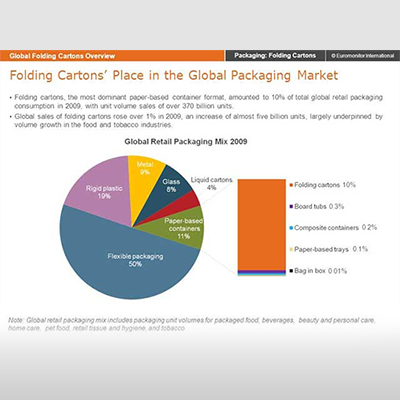Regulatory Considerations for Medical Packaging: How to Stay Compliant

Ensuring compliance with regulatory standards is crucial in the field of medical packaging to maintain the safety and efficacy of medical devices and pharmaceutical products. Here are some key considerations to help you stay compliant with regulatory requirements:
Understand Regulatory Frameworks:
Understanding regulatory frameworks is a crucial first step in ensuring compliance with medical packaging standards. Different regions are governed by specific agencies, and familiarity with these entities is essential for adhering to guidelines. In the United States, the Food and Drug Administration (FDA) oversees medical packaging standards, prioritizing safety and efficacy. Similarly, in Europe, the European Medicines Agency (EMA) plays a key role in regulating packaging standards. Depending on the location of operations, other relevant regulatory bodies may also be involved. These agencies establish and enforce guidelines to safeguard the quality and integrity of medical packaging. Businesses in the production and distribution of medical devices and pharmaceuticals need to stay well-informed about these requirements. Regularly monitoring updates from regulatory bodies is crucial to adapt to any changes in standards or procedures.
| Also Read: The Future of Medical Packaging: Innovations Shaping Healthcare |
Quality Management Systems (QMS):
Implementing a strong Quality Management System (QMS) is essential for ensuring compliance with international standards, particularly in the realm of medical packaging. ISO 13485 serves as a cornerstone, outlining the requirements for a QMS tailored to the specific intricacies of the medical device industry. This standard provides a comprehensive framework that organizations can adopt to ensure the consistent production of safe and effective medical devices. A well-structured QMS, aligned with ISO 13485, encompasses various facets such as developing quality policies, managing risks, controlling documents, and incorporating continuous improvement processes. Adhering to this international standard enables companies involved in medical packaging to establish and maintain a systematic approach to quality. This, in turn, enhances their ability to meet regulatory expectations and deliver product.
| Also Read:Compliance and Security Measures in Pharmaceutical Packaging |
Compliance with ISO Standards:
Ensuring compliance with ISO standards is paramount in the realm of medical packaging, and one of the key standards to adhere to is ISO 11607. This standard meticulously outlines requirements and test methods essential for materials, preformed sterile barrier systems, sterile barrier systems, and overall packaging systems within the medical industry. ISO 11607 provides a structured framework to guarantee the integrity and safety of medical packaging, addressing critical aspects such as microbial barrier properties and the suitability of materials for maintaining product sterility. By strictly adhering to ISO 11607, companies involved in medical packaging can establish and maintain a reliable and standardized approach to packaging design, validation, and process control. This commitment to compliance not only facilitates regulatory approval but also reinforces the assurance that medical products are packaged in a manner that preserves their quality and meets the stringent requirements of the healthcare sector.
| Also Read: How do Evolving Trends in Medical Packaging Contribute to Health Preservation? |
Risk Management:
Ensuring the safety and effectiveness of medical packaging processes hinges on comprehensive risk management. Conducting thorough risk assessments is a pivotal element in this endeavor, aiming to identify and evaluate potential risks associated with packaging medical devices or pharmaceutical products. ISO 14971, a widely acknowledged standard, provides a structured framework for implementing effective risk management strategies in the medical industry. This standard guides organizations in systematically identifying, analyzing, and mitigating risks throughout the product lifecycle, including considerations related to packaging. Aligning risk management practices with ISO 14971 enables companies to bolster their ability to anticipate and address potential issues, ensuring that packaging processes are robust and by industry best practices. This proactive approach not only supports compliance with regulatory requirements but also enhances the overall quality and safety of medical products through thoughtful risk mitigation.
Validation and Verification:
Validation and verification processes are crucial in ensuring the compliance and effectiveness of medical packaging. To meet rigorous regulatory requirements, it is essential to validate and verify various aspects of packaging processes. This involves validating critical elements such as the sterilization process, which is vital for maintaining the sterility of medical devices or pharmaceutical products.
Additionally, validating the integrity of packaging materials is crucial to ensure that the materials used can withstand the intended environmental conditions and provide the necessary protection.
Moreover, a comprehensive validation of the entire packaging system is crucial to affirm its functionality and reliability. This encompasses evaluating the packaging process from start to finish, including material selection, sealing methods, and the overall structural integrity of the packaging. Adhering to regulatory standards, such as those specified in ISO 11607, requires demonstrating that these processes consistently yield packaging that aligns with predetermined specifications.
Verification, on the other hand, involves confirming that each step of the packaging process meets specified requirements. This may include routine testing and monitoring to ensure that the packaging materials and processes continue to perform as intended over time. By integrating comprehensive validation and verification protocols into the packaging workflow, companies can instill confidence in the reliability of their packaging processes, thereby meeting regulatory expectations and ensuring the safety and efficacy of the enclosed medical products.
Labeling Compliance:
Compliance with rigorous labeling standards is of utmost importance in the field of medical packaging to guarantee the transparency and safety of the enclosed products. It is essential that all labeling on medical packaging adheres to regulatory requirements, providing accurate and clear information. This includes precise details about the product, explicit instructions for use, and any necessary warnings or precautions. Meeting these requirements not only facilitates regulatory approval but also plays a pivotal role in ensuring that end-users, healthcare professionals, and regulatory authorities can easily comprehend the information presented on the packaging. By meticulously addressing labeling compliance, companies in the medical industry can enhance user safety, minimize the risk of errors, and contribute to the overall efficacy of the healthcare system by promoting proper usage and understanding of packaged medical devices or pharmaceutical products.
Biocompatibility:
In the field of medical packaging, ensuring biocompatibility is of utmost importance, particularly when the packaging directly interacts with the medical device. The materials used in such packaging undergo thorough scrutiny to ensure they are biocompatible, especially for devices intended for implantation or prolonged contact with the human body. Biocompatibility is critical to prevent adverse reactions, inflammation, or other harmful effects that may result from the interaction between the packaging materials and the body's tissues or fluids. Adhering to established standards and regulations regarding biocompatibility, such as ISO 10993, is essential to guarantee the safety and compatibility of packaged medical devices with the human body. Prioritizing biocompatibility in medical packaging contributes to the overall safety and effectiveness of healthcare products, fostering trust among healthcare professionals and patients alike.
Environmental Conditions:
Addressing the impact of environmental conditions is integral to maintaining the stability and integrity of medical packaging. It is essential to thoroughly consider and test how factors like temperature, humidity, and light may affect the packaging and, consequently, the enclosed medical products. Rigorous testing ensures that the packaging materials can withstand diverse storage and transportation conditions without compromising the safety or efficacy of the contents. This diligence is particularly critical for pharmaceuticals and medical devices, where the preservation of product quality is paramount. By assessing and fortifying packaging against environmental challenges, companies in the healthcare industry not only adhere to regulatory requirements but also contribute to the reliability of their products throughout the supply chain. This proactive approach safeguards against potential risks associated with variations in environmental conditions, ultimately ensuring that medical products reach end-users in optimal condition.
Traceability:
Establishing a robust traceability system is vital for ensuring transparency and accountability within the medical packaging supply chain. This system functions as a meticulous record-keeping mechanism, facilitating comprehensive tracking of materials from initial sourcing through every stage of manufacturing and, ultimately, distribution. It involves tracing raw materials, documenting manufacturing processes intricacies, and monitoring the subsequent journey of products through the distribution network. This level of traceability is not just a regulatory requirement in many regions but also a proactive measure to identify and address any issues that may arise during production or distribution. By adopting a traceability system, companies in the medical packaging sector enhance their ability to address quality control concerns, mitigate risks, and comply with industry standards. Additionally, this traceability framework reinforces accountability, fostering a higher level of confidence among stakeholders and ensuring the integrity of medical products throughout their lifecycle.
Adverse Event Reporting:
Establishing robust procedures for reporting adverse events is a crucial aspect of ensuring the safety and compliance of medical packaging. Companies must implement structured protocols to promptly report and document any adverse events associated with the packaging of medical devices or pharmaceutical products. Compliance with regulatory requirements, often outlined by agencies like the FDA or EMA, is essential to meet legal obligations and uphold public health standards. These procedures should include clear guidelines on how to identify, investigate, and report adverse events, ensuring timely communication with relevant authorities. By diligently adhering to these reporting protocols, companies contribute to ongoing product safety monitoring, enable swift corrective actions, and demonstrate a commitment to transparency and accountability in the healthcare supply chain. This proactive approach not only aligns with regulatory expectations but also reinforces public trust in the safety and reliability of medical products.
Stay Informed and Updated:
Staying informed and up-to-date on regulatory requirements is paramount for ensuring the continued compliance and success of medical packaging processes. Companies must establish a proactive approach by regularly monitoring updates and changes in regulations. This involves active participation in industry conferences, where insights into evolving standards and best practices are shared. Subscribing to relevant publications and maintaining open lines of communication with regulatory agencies further enhances awareness of any modifications that may impact packaging processes. By embracing a continuous learning mindset, companies can swiftly adapt to new regulatory expectations, incorporate the latest industry advancements, and implement necessary adjustments to maintain compliance. This commitment not only fosters a culture of regulatory diligence but also positions organizations to navigate the dynamic landscape of medical packaging with agility and responsiveness to emerging requirements.









